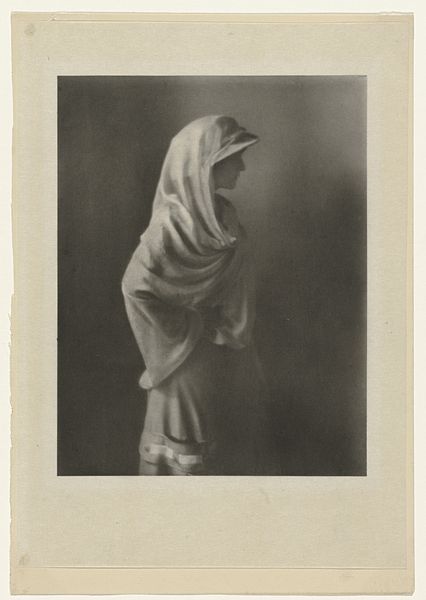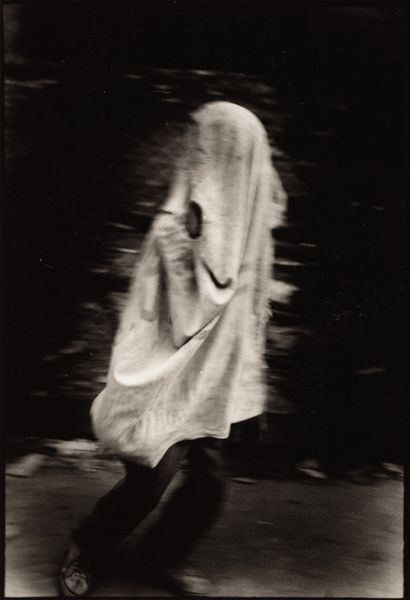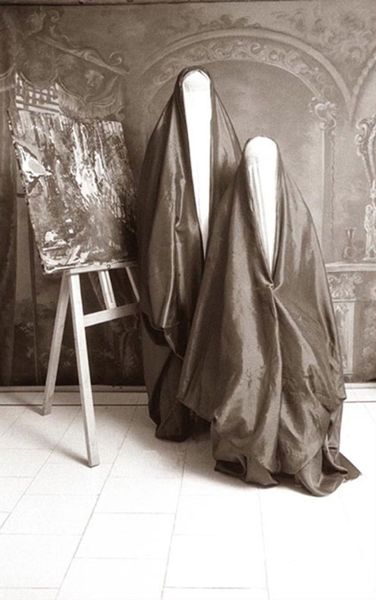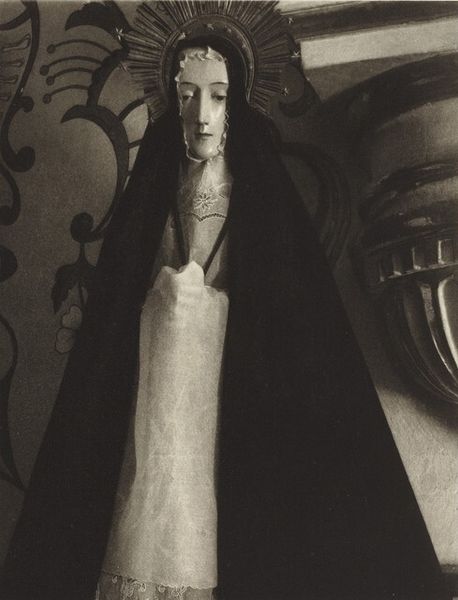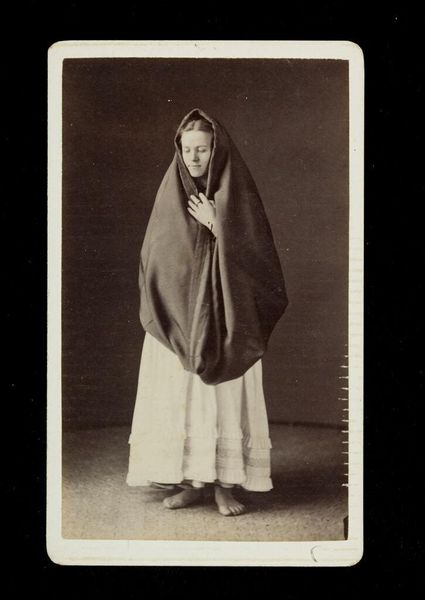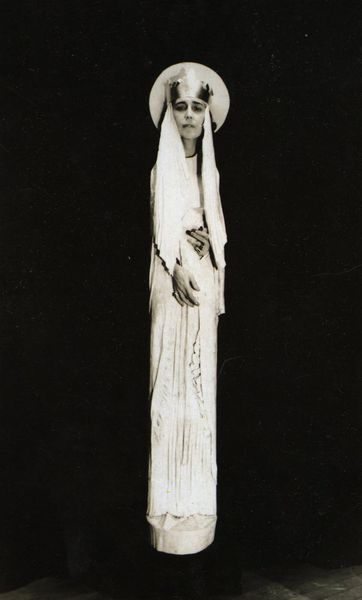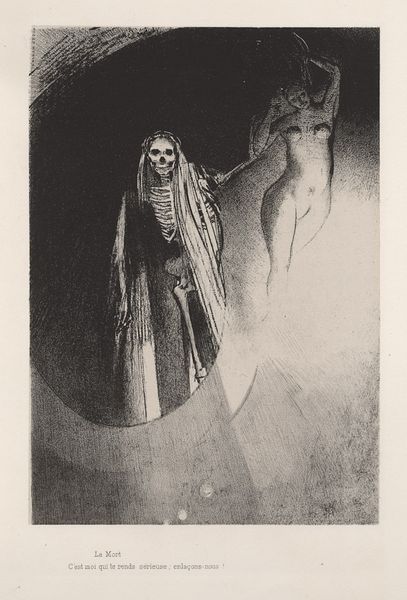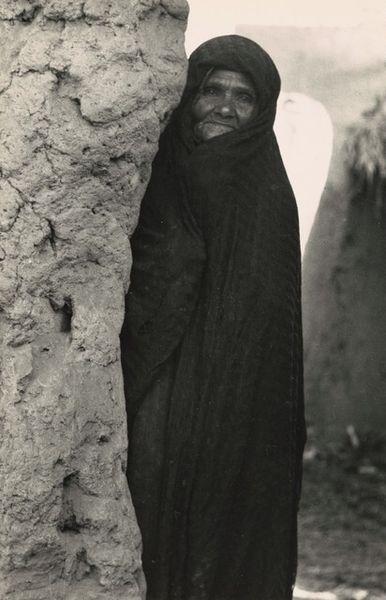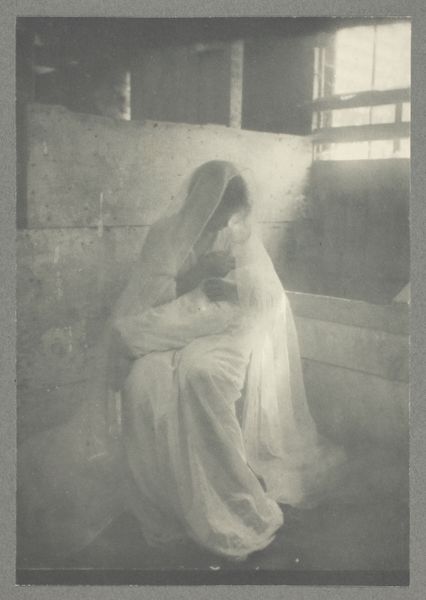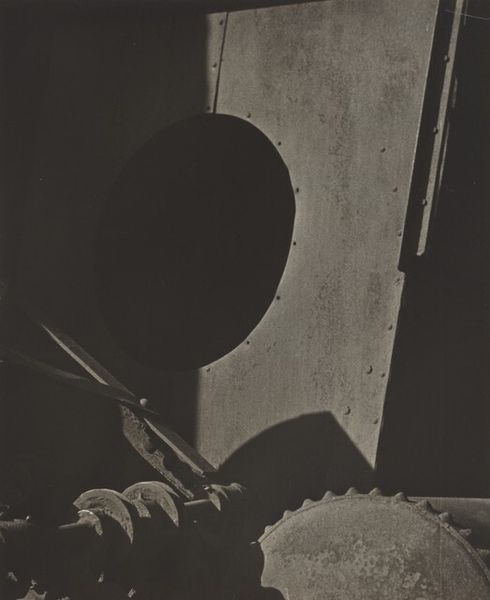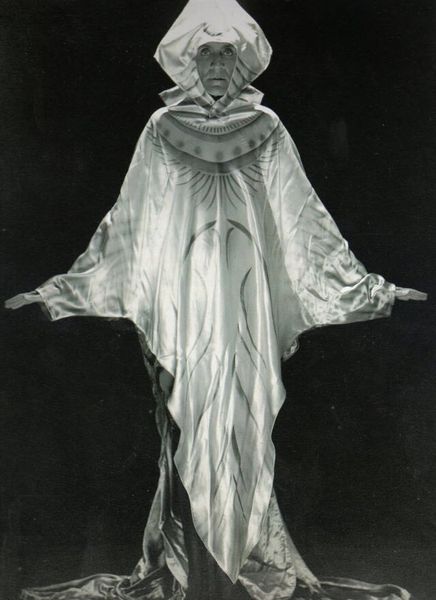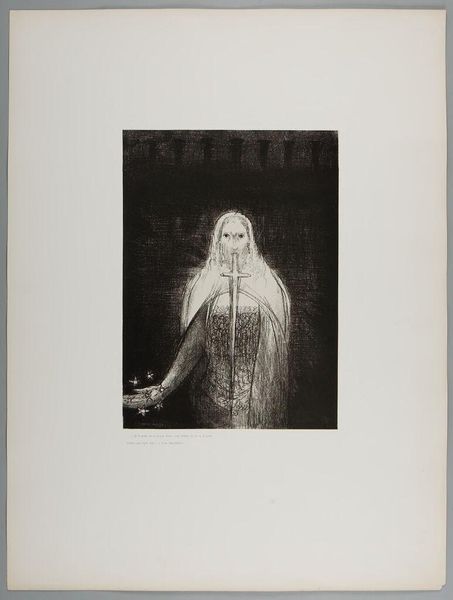
Copyright: Pushpamala N,Fair Use
Curator: This compelling photographic work, created by Pushpamala N in 2003, is titled "Portrait of a Mohammedan Woman." Editor: It strikes me as deeply unsettling, almost ghostly. The monochromatic palette amplifies the subject’s veiled form, rendering her both present and absent simultaneously. It’s heavy with a certain gravity. Curator: The composition is rather interesting. The veiled figure, positioned to the left, contrasts sharply with the still-life arrangement on the right – flowers in a vase, casting a blurred shadow. There's a clear spatial dynamic established. The fabric’s fall, its texture, creates powerful vertical lines. Editor: Indeed. And those visual symbols evoke so many cultural associations. The burqa, traditionally a symbol of modesty, can also be interpreted as one of enforced anonymity and restricted movement, a complex layering of meanings depending on the viewer’s cultural background and beliefs. Curator: Precisely. By calling it a "portrait," Pushpamala N is also invoking a loaded art historical term. This is clearly not a straightforward likeness but a staged intervention, prompting us to deconstruct the very idea of portraiture. The lighting, for instance, feels artificial, heightening the sense of constructed reality. Editor: The flowers, rendered softly out of focus, seem symbolic, too. Are they a fleeting gesture towards beauty and domesticity within constraints, a counterpoint to the severe anonymity of the figure? Flowers frequently represent transient beauty and delicate, life-affirming symbolism across various cultures. Curator: Perhaps. And we can't ignore the conceptual implications. Pushpamala N's use of photography itself raises questions about representation and identity in contemporary art. This work doesn't just present an image; it stages a critical dialogue about visibility and erasure. Editor: It’s a work that certainly invites us to consider the weight of cultural symbols and the multiplicity of possible interpretations embedded within an image. Its strength lies in prompting viewers to confront their own preconceptions. Curator: Yes, ultimately, this photograph offers a compelling visual investigation of the complexities inherent in representing identity, and it provokes ongoing critical analysis. Editor: I agree. It’s a photograph that resonates precisely because it leaves so much unsaid, existing as both historical record and contemporary provocation.
Comments
No comments
Be the first to comment and join the conversation on the ultimate creative platform.
